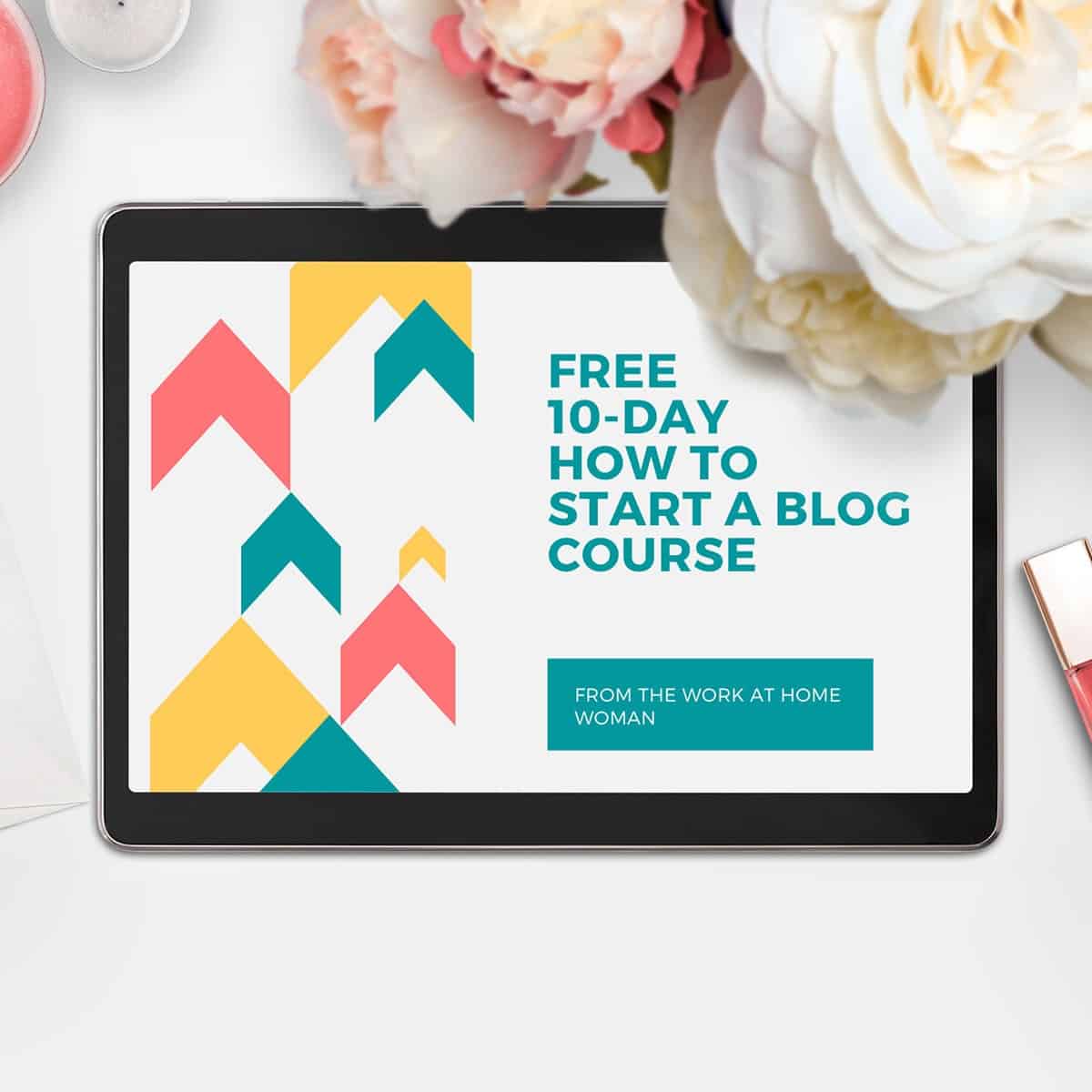If you’re a brand new blogger, you might be struggling with how to write your first blog post on WordPress.
For example, what are you supposed to write about, and what are the best practices?
Truly, the best thing to do is just to get started and learn as you go.
But if you’re really scratching your head over how to get started, these eight steps can help you find your way.

Step 1: Determine Who You are Writing for
If you intend to monetize your blog one day, it’s important to write content that’s relevant to your readers.
It may be tempting to make your first post an introduction to yourself and an overview of what the website is all about, but I would encourage you to save that for your “About” page.
Instead, jump right in with content that’s going to serve your target audience.
Think about your niche and then pick a problem or question that many people have in relation to that niche.
You can’t go wrong with a good “how-to” post!
For example, if you are a beauty blogger, your first post could be about choosing the best products for your skin type.
Step 2: Choose a Long Tail Keyword to Target
SEO is a long game, and it will likely be many months before you start seeing any Google traffic with a new website.
Although you may have more success getting traffic via social media initially, Google traffic is more ideal because it tends to convert better and be a steadier source of traffic.
Therefore, it is still worth adopting some good SEO practices from the beginning!
Keyword research is a big topic with many different approaches, but beginners on a budget can get started using a free keyword research tool like Ubersuggest.
If you type your topic idea into Ubersuggest, it will give you an overview of the keyword phrase, how high it is in competition, and a list of other keyword ideas.
As a beginner, you typically want to choose something with a low keyword difficulty and low volume. Low-volume keyword ideas are more specific and are also known as “long-tail” keywords.
For example, “spice cake recipe” is a high volume keyword phrase and also very high in competition.
But “spice cake recipe with cream cheese frosting” is a much more specific term with lower search volume and less competition, which means it is easier to rank in Google.
Long-tail keywords are also known for driving high-converting traffic!
There is much, much more to keyword research than this, but these tips will help get you thinking about SEO right out of the gate.
Just don’t let yourself get overwhelmed to the point where it prevents you from posting.
Remember, you can always go back and update older posts later as you learn more about SEO!
Step 3: Outline Your Blog with Subheadings
Now that you have your topic idea and long-tail keyword phrase, it’s time to outline your blog post using subheads.
You should use subheadings in your blog post because:
- Google likes subheadings
- Readers like subheadings
- An outline will help prevent writer’s block!
Use H2 headings throughout your blog post to keep it Google-friendly. (The H1 Header tag is always reserved for the title.)
It’s also a good idea to work your keyword (or a variation of) into one or two of your subheadings if you can. But don’t go overboard and make sure it reads naturally.
Step 4: Write Your Blog Post
Now it’s time to use your outline to draft up the content for your first blog post.
For many newbie bloggers, this is the most overwhelming part, but it doesn’t have to be! Most bloggers do best with a casual writing style, as though speaking to a buddy.
So put down that thesaurus and just write the way you would speak naturally. Let your personality shine through!
At this stage, don’t worry about making every sentence perfect yet. Just get all your thoughts and ideas down first. You can go back and polish it up during the editing stage.
Keep your sentences and paragraphs short. Each paragraph should only be 1-3 sentences long.
It’s also a good idea to end your blog post with a “Call to Action” or question that encourages engagement or discussion in the comments.
Step 5: Choose an Engaging Title
Choosing a click-worthy title is really important.
Because it doesn’t matter how awesome your post is – if your blog title doesn’t make people want to click, it’s not going to perform well.
I usually start with a working title when I begin writing my post and change it to a more catchy title after I’ve written it.
Some great title ideas include “how-to” and “list” type titles. Also, make sure the title includes your keyword phase.
If you need help choosing a title, a fantastic free tool to try is Coschedule’s Headline Analyzer. All you need to do is plug in your title, and it will give it a grade and some suggestions for improvements.
Step 6: Add Photos
Readers love visuals, so it’s always a good idea to add a few relevant photos or short videos if you can. They help break up the content and make your content more interesting.
Original images are ideal, but many bloggers will use stock photos instead.
If you use stock photos, be careful that you obtain them legally, and understand the license that comes with them. There are free stock photo sites like Unsplash and Pixabay, but you may find the selection is a little bit limited.
If you can swing it, it’s better to purchase your stock photos from somewhere like Depositphotos.
Keep in mind that large images can slow down your site significantly, so take the time to resize your pictures before uploading them into WordPress. (My favorite free tool for this is Squoosh.)
Step 7: Edit and Format
The next step is to thoroughly edit your content to ensure it is easy to read and free of errors.
It can be hard to catch all the mistakes by yourself, which is why it’s a good idea to use a tool like Grammarly.
Grammarly is a free browser extension that automatically catches most of your spelling and grammatical errors.
The next step is to format your post for optimal on-page SEO. If you’re using WordPress, choose or create the parent category for your blog post from the settings bar on the right.
Next, make sure you have a few relevant internal and external links included in your post.
You’ll also want to make sure your keyword phrase is in the following locations:
- The title
- The first 100 words of the blog post
- The alt description of at least one of your images, where it makes sense
- The slug/permalink
- The meta description
- Near the end of your blog post
It’s crucial not to overuse keywords in your blog post. This is called “keyword stuffing,” and if Google suspects you’re doing this, your rankings will suffer for it.
Yoast is a great free plugin that gives you guidelines for improving your post’s SEO. It also allows you to easily optimize your meta description and SEO title.

Step 8: Make it Easy to Share
During your blog’s early days, social media is your best friend. It’s the quickest way to get some traffic coming in to your new posts.
My favorite plugin for social sharing is Grow by Mediavine, which lets you add a floating sidebar of social share buttons on your blog post or within your content.
This makes it super easy for anyone reading your blog to share your post on their favorite social media platform.
Step 9: Publish!
Once you have taken all of the above steps, go ahead and hit that “Publish” button! Do not get too hung up on making everything perfect because you can (and will) always go back and make improvements to it later.
The most important thing is to get your stuff out there so your audience (and Google) can start finding you!
Conclusion
Learning how to write your first blog post can seem a little overwhelming at first. But if you follow the above steps, you’ll be hitting that publish button before you know it!
Just remember to keep moving forward. It’s through taking action and learning as you go that results in a successful, income-generating blog!







Leave a Comment